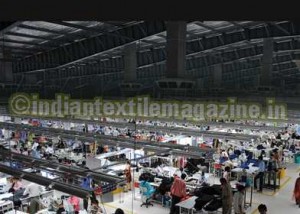 Most companies have an environment of disparate legacy systems, applications, processes and data sources. Maintaining legacy systems is a difficult challenge that modern enterprises are facing today. The commercial market provides a variety of solutions to this increasingly common problem of legacy system modernization.
Most companies have an environment of disparate legacy systems, applications, processes and data sources. Maintaining legacy systems is a difficult challenge that modern enterprises are facing today. The commercial market provides a variety of solutions to this increasingly common problem of legacy system modernization.
However, understanding the strengths and weaknesses of each modernization technique is paramount to select the correct solution and the overall success of a modernization effort. Software systems are critical assets for companies and incorporate key knowledge acquired over the life of an organization.
The old system which is called as legacy systems incorporates a large number of changes continuously to reflect evolving business practices. These systems are matured, heavily used and constitute massive corporate assets.
Shirt Company, a world class garment manufacturer, established in 1984, also a popular outsourcing destination for several international brands, has been working on disparate system for quite some time. The products manufactured include men’s shirts and casuals, women’s blouses, skirts, dresses, maternity wear and kids wear. The company has three manufacturing plants with the best of infrastructure, machinery and over 3,000 people working for it.
The challenges faced by the company due to deficiencies in its legacy system are unavailability of timely and accurate information on stocks available at its retail outlets; requirement of online interface with point of sale (POS) application (LS-retail system); difficulty in production planning in line with retail operations; and unavailability of automatic calculation of margin and royalty; as also of business planning process, sampling system, product costing and bar code printing.
The manufacturer realised that by consolidating its disconnected business processes in a single integrated solution would offer real time information on manufacturing, sales insights, advanced customer demand forecasting and automated financial reporting needed to go ahead with its aggressive growth plans.
The company sought the services of HCL Technologies for its expertise in the successful implementation of several advanced planning tools. As a leader, project manager and implementer, HCL led its client through the complete implementation process, from education and training to design and implementation.
Solution offered
HCL implemented SAP ECC 6.0 solution with best retail practices using the accelerated SAP (ASAP) 7.0 methodology. The project involved business blueprint, configuration, process qualification by unit testing and user acceptance testing. Also provided were assistance in cut-over planning and operations, training, implementation and documentation for implementation of ECC 6.0.
The scope of work included financial accounting (FI), controlling (CO), production planning, sales and distribution (SD), materials management (MM), SAP best practices for retail industry, ABAP developments, interfaces- Microsoft’s LS-retail POS system for stock and sale update, barcode printing program, both bulk and invoice-based, sampling and product costing.
Around six HCL consultants were in charge of the project involving business process rationalization and simplification in some functions of the business. The consulting team worked closely with the management and staff to suggest processes of improvement wherever required. The team was also able to convince the company that the system implementation with the benchmarked processes could bring improvements in terms of controlling costs.
The manufacturer was able to standardise business processes across the company, improved reporting and MIS generation due to centralization of the information systems with less paper work, end-to-end business cycle mapping right from opportunity management to project completion, periodic and milestone-based billing configuration which can be used based upon the contract agreement with the customer, and sampling and product costing process incorporated in a single system.